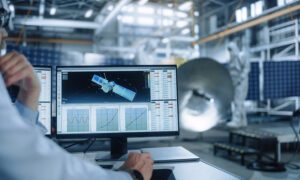Distractions remain one of the leading causes of traffic accidents worldwide; each year, resulting in loss of life and tens of thousands of injuries. This is becoming a significant problem in the current world as technology enhances society, and solutions are being developed. New technologies are emerging, creating more solutions to help driver’s avoid distractions and make our roads safer.
Advanced Driver Assistance Systems (ADAS)
ADAS is considered the most suitable intervention in combating distracted driving. Humans use sensors, cameras, and AI to monitor the elements of their surroundings and how a driver behaves. Some elements linked with ADAS include LDWS, AEB, ACC, and CAS. ADAS significantly reduces accidents by providing immediate feedback and altering the driver’s actions because of possible distracters.
In-Vehicle Monitoring Systems
Another essential technology intensively used to combat the problem of distracted driving is in-vehicle monitoring systems. These systems use cameras and sensors to monitor the driver’s behavior. Motorists can recognize instances such as moments where a driver’s gaze is not on the road; they can also provide correctives to these motorists. The most sophisticated systems can also act as quarantine systems that can automatically decrease the speed or turn on autopilot for some time to avoid an accident.
Smartphone Integration and Management
Smartphones are among drivers’ most common distraction causes, so management and integration solutions are inevitable. Two well-known and widely used interfaces are Apple CarPlay and Android Auto, which enable a driver to use his or her smartphone through the car’s display. These systems assist the drivers in making and receiving calls without having to take their focus on the road by using voice commands to make the calls or by reducing any physical contact with the phone that would top up the possibility of distractions. Moreover, several applications act as a notification and call blocker while driving to eliminate as many distractions as possible.
Heads-Up Displays (HUDs)
Heads-up displays are images of the data on the control windscreen for the driver’s benefit; the information displayed includes speed, direction, and warning signs. It also allows drivers to see other important information, which is also needed in most cases to avoid taking the focus off the road. Therefore, the deposits in front of a driver and not requiring the drivers to turn their heads significantly contribute to the focus on the road and eliminate the chance of distraction.
Artificial Intelligence and Machine Learning
Artificial intelligence and machine learning are used to design enhanced and progressive systems to tackle distracted driving. Any patterns of distraction can be very well predicted and even identified by the intelligent algorithms derived from artificial intelligence analysis of the voluminous data received from different sensors. For instance, an AI system may learn that a driver is more apt to be distracted at some hours of the day and under some driving conditions. Thus, such moments can be expected, and the system can warn the user or perform specific actions to ensure safety.
Driver Engagement Tools
However, confident car makers install driver engagement tools to improve driver awareness. Some of these tools include touchscreen controls that do not need to be touched, voice controls, and buttons on the steering wheel. The operations and movements shown in these tools are made smoother, and more fundamental controls are provided, thereby assisting the drivers in lessening their mental workload and focus on the road.
Biometric Sensors
Biometric sensors are another technology that has been developed, primarily focusing on informing the driver’s state. For instance, it can monitor eye movement and other body signs, such as pulse rate, to check whether a driver is getting distracted or due to fatigue. This is particularly useful if signs of inattention or fatigue are observed, as the system could warn the driver or even take control of the car to avert an accident.
Conclusion
The issue of distracted driving promises potential innovative technologies to prevent tragic accidents and loss of life. In 2021, more than 8,000 car accidents were attributed to distracted driving resulting in 44 deaths in the state of Oklahoma alone. Safety features ranging from proper driver-assist technologies to biometric sensors can minimize the occurrence of distraction-related incidents. More so, the interaction of these technologies in the vehicles in use today could lead to significant improvements in road safety and eventually prevent more fatalities.

































